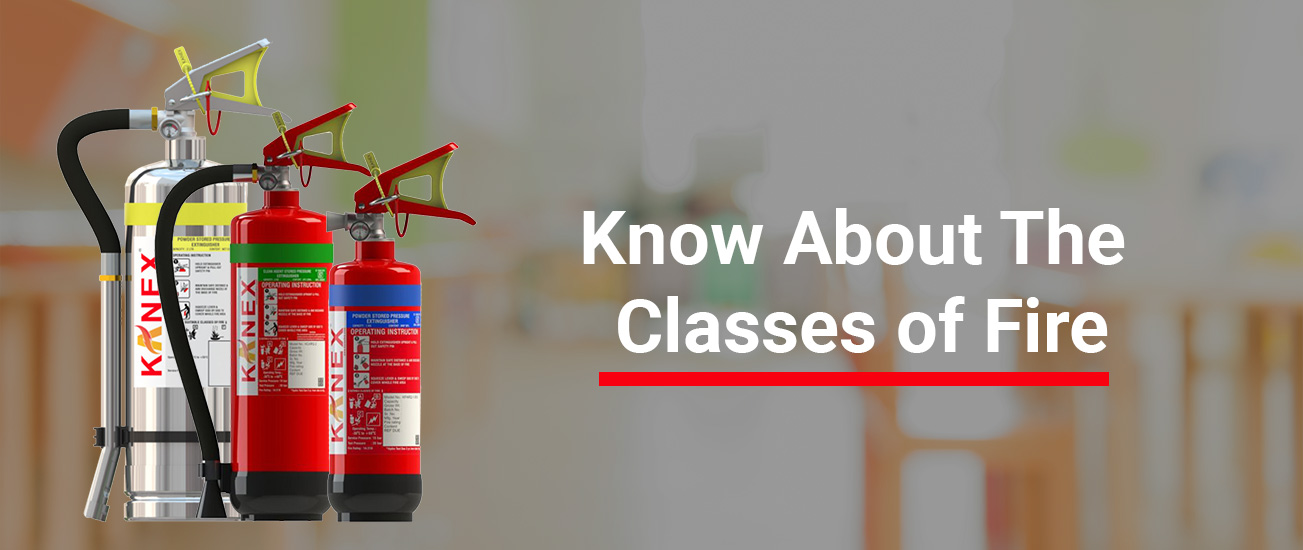Understanding the 6 Classes of Fire and Their Extinguisher
- August 27, 2021
Fire incidents can be extremely destructive. They damage property, risk lives, and lead to irreversible consequences. The best way to prevent such disasters is to have a strong fire safety plan and choose the right fire extinguisher based on the type of fire.
But here’s the key: Not all fires are the same.
Understanding the classes of fire extinguishers is crucial to handling each type safely and effectively. This guide will walk you through all the classes of fire, their sources, and the recommended extinguishers.
What Are the Classes of Fire?
The classes of fire are categories based on the type of fuel causing the fire: Class A (solids), Class B (liquids), Class C (gases), Class D (metals), Electrical (equipment), and Class F (cooking oils). Each class requires a specific approach and a fire extinguisher to safely manage or extinguish the fire.
Different Classes of Fire Extinguishers
Class A Fire – Solid Combustibles
Class A fires involve solid combustible materials such as paper, wood, cloth, rubber, and plastics. These are the most common types of fires and can occur in homes, offices, warehouses, and public places. Since these materials burn easily and leave ash, they are categorized under Class A. To extinguish a Class A fire effectively, water or foam fire extinguishers are recommended, as they help cool the burning material and stop the fire from spreading.
Class B Fire – Flammable Liquids
All the fuel that leads to class B fires is liquid. Most of the liquids, fluids, and chemicals used in factories and workplaces are inflammable or explosive. To Extinguish Fire of this type, you need to choose powder or foam Fire Extinguishers for your place.
Class C Fire – Flammable Gases
The class C fires involve gases. This type of fire can be caused by LPG, natural gas, or any other gas that creates an explosive or flammable atmosphere. While you can use Class C fire extinguishers, the best way to fight a Class C fire is to shut off the gas supply. Having said that, the Powder Fire Extinguishers is the best choice for stopping this kind of Fire.
Class D Fire – Combustible Metals
Class D fires involve combustible metals such as magnesium, titanium, sodium, and aluminum powders. These types of fires typically occur in industrial settings like metal workshops or laboratories where such materials are used or stored. Water and foam should never be used on metal fires, as they can react violently. Instead, a special dry powder fire extinguisher designed for metal fires is the safest and most effective solution.
Electrical Fires – Live Equipment
It is not considered a class as electricity is only a source of fire and not a fuel. However, electrical fire leads to additional hazards. You should use dry powder or Co2 Fire Extinguishers to manage electrical fire.
Class F Fire – Cooking Oils & Fats
Class F fires are caused by the ignition of cooking oils or fats, most commonly in kitchens—both domestic and commercial. These fires usually happen when oils are overheated and spontaneously catch fire. Water is extremely dangerous in these situations, as it can cause the fire to spread rapidly. The correct way to handle a Class F fire is by using a wet chemical fire extinguisher, which cools the oil and forms a barrier to prevent reignition.
Why Knowing the Classes of Fire Matters
- Prevents accidents and injuries
- Helps in selecting the right firefighting equipment
- Reduces fire damage in homes and businesses
- Improves emergency preparedness
- Meets fire safety compliance standards
Conclusion
Now that you are aware of various classes of fire, it will be easier for you to choose the right Fire extinguishers for the right area of your facility. It will also help you to make sure that you put out the fire using the right tools.
At Kanex Fire Solutions Limited, we provide a wide range of certified fire extinguishers designed for every fire class—helping you stay prepared and protected at all times. Make fire safety a top priority—because prevention is always better than cure.






